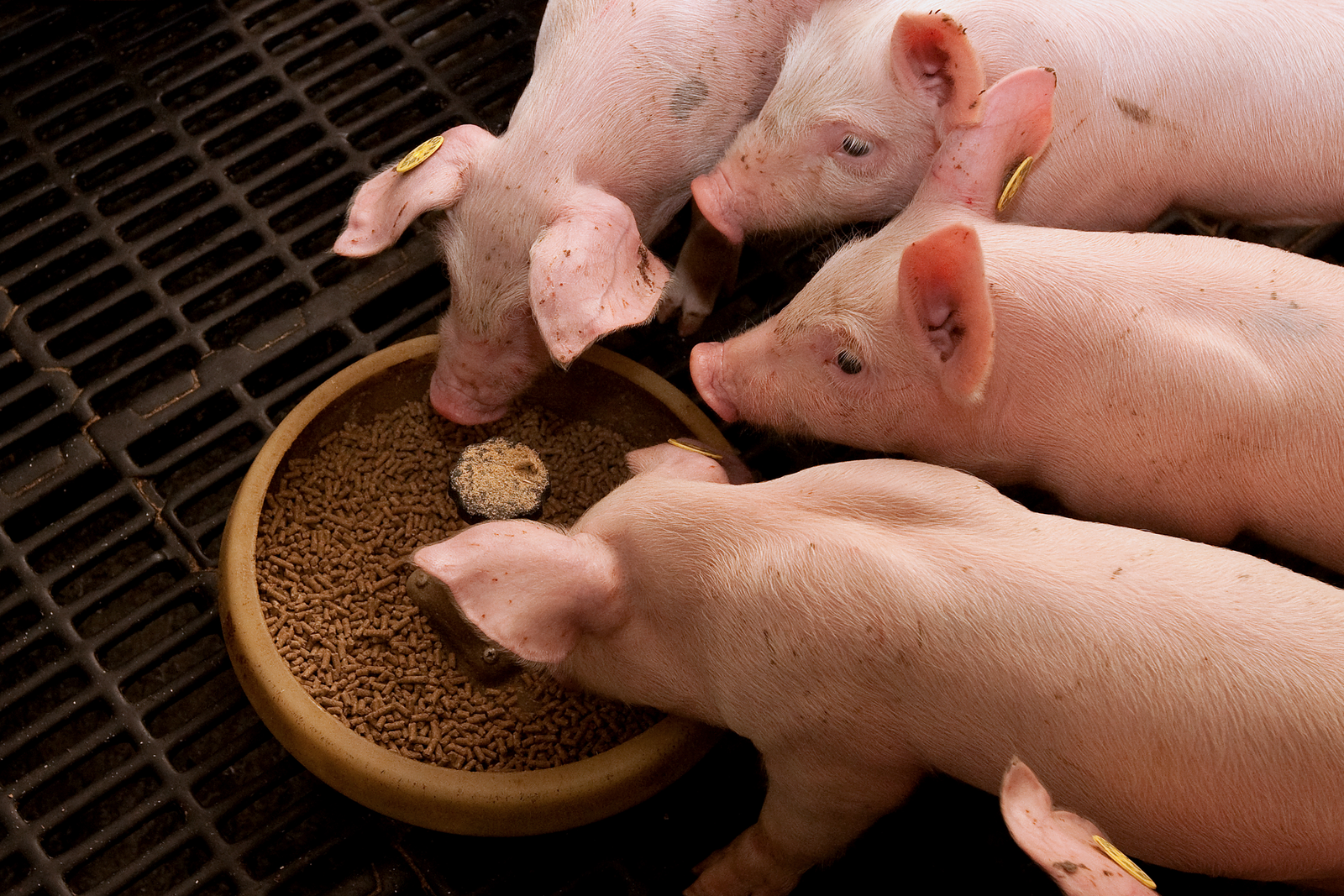Enzymes help to maintain efficient pig production

Future diets might be at risk to contain a higher amount of NSP. This is because less quality ingredients are used more often, hence having an effect on the feed intake of the pigs. Enzymes can help. This topic was further discussed at a recently held enzyme meeting, organised by Huvepharma.
Dr. Filip De Jaeger of INVE (Belgium) focussed on the role of carbohydrates in the digestion of the pig, in particular the effect of fibre in pig fattening diets. To get more control on the fermentation process in the gut of the pig, nutritionists better use NSP and digestible NSP (dig NSP) values in pig-feed formulation instead of crude fibre. Also physical-chemical properties of the NSP fraction, such as viscosity, swelling capacity, solubility, water holding capacity and microbial degradability of raw materials are parameters to take into account when formulating pig feeds. These parameters can be used to reach good zootechnical results and control gut health. Dr. de Jaeger gave several examples how to do this, for instance how to combat Brachyspira (low dig. NSP and/or low resistant starch) or Clostridium perfringens (e.g. create regular influx from stomach to the small intestine).
Read here how xylanase enzyme might act as a prebiotic as well
Breeding goals should be adapted
Chris Opschoor, nutritional and technical support manager at Topigs (The Netherlands) explained the role of pig breeding for efficient pork production in a changing world. As today the raw materials for pig feed production are changing, due to changes in availability and new processing techniques, breeding and selection have also to be adapted to this. In order to reach optimal performance for maximal profitability it is necessary the breeding goals are adapted or aligned to todays and future raw material package. Future feeds will be composed out of a lower amount of first-class sources such as cereals and soya leading to more NSP rich diets, containing more food by-products (human) and more “new” raw material sources. This will all have a major impact on the feed intake of the animals (which is the base behind the design of feed programs and feed compositions), but also on the digestibility of the feed and so finally on the total efficiency of pig production.
Read here about Hostazym X, an NSP enzyme for use in all feeds for pigs and poultry
Enzyme and use of DDGS
Practical experience with the use of NSP enzymes, in particular with Hostazym® X, in fattening pig diets, containing one of these new NSP rich raw materials was presented by dr. Tim Fakler (Kerber Milling Companies, USA). He used feeds with DDGS (corn based) at levels of 20-25 % in grow/finishing diets, and 30-35 % in sow diets. Only with the help of Hostazym® X he could use these levels, without compromising the growth and FCR. The savings he reached by using DDGS were 5-12 $ per pig and about 10 $ per sow per year. The sole use of a highly efficient phytase, in particular applied at super dosing levels, combined with an adequate NSP enzyme has resulted in an additional gain of 2.50 $ per pig. Further, the use of Hostazym® X at recommended and double dose has increased the number of top hogs delivered and remarkably reduced the mortality rate with more than 1.5 %. This last factor is of great importance, as by reducing mortality the number of pigs delivered to the slaughter plant is increased, improving the overall total profitability (lower loss of valuable piglets, higher capacity utilisation degree).











